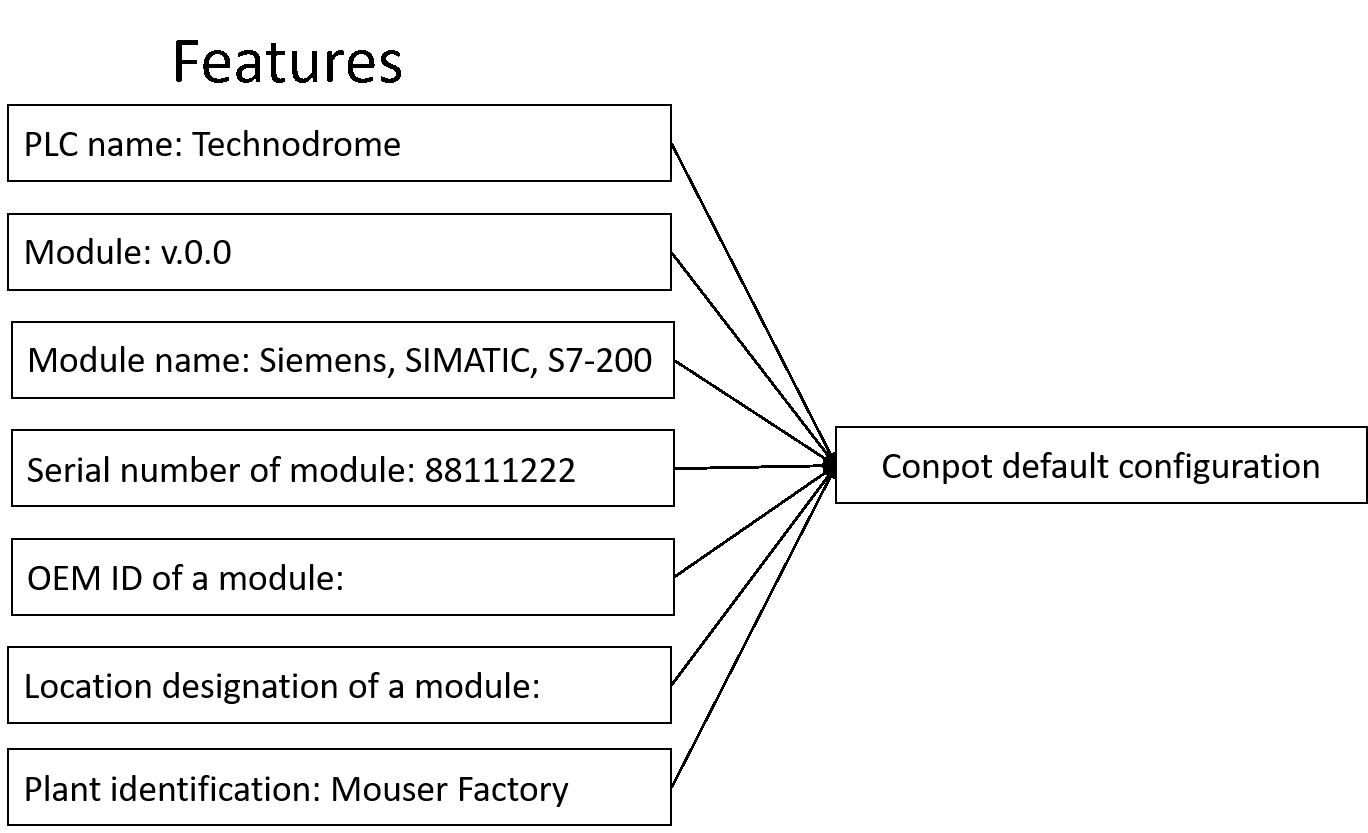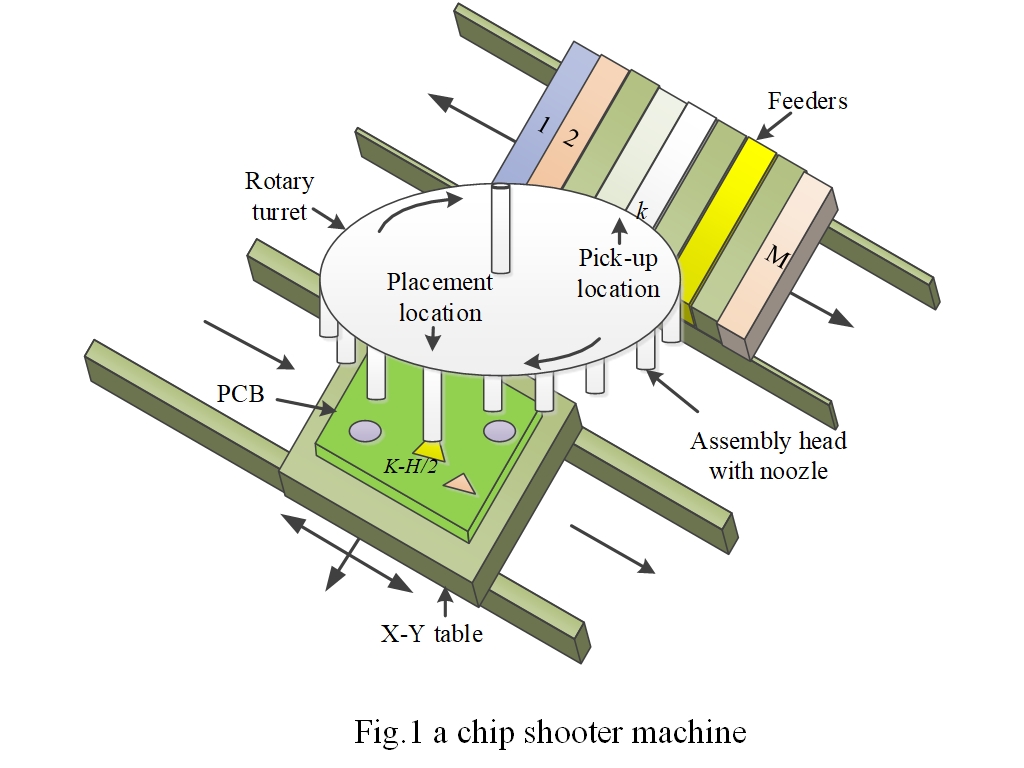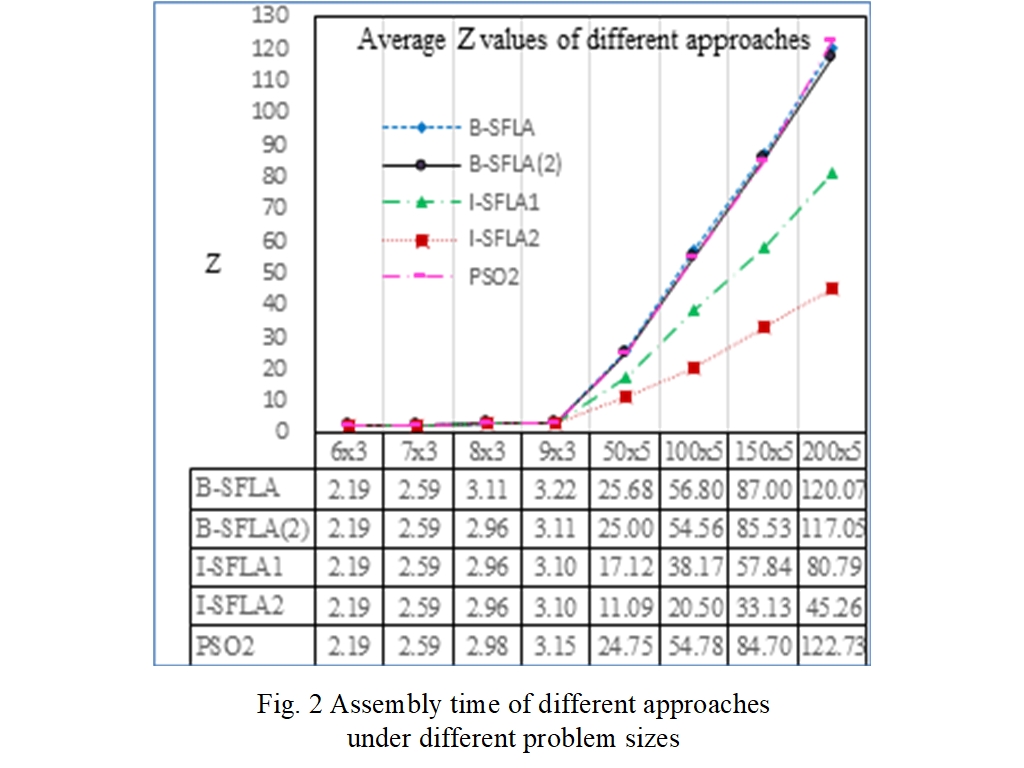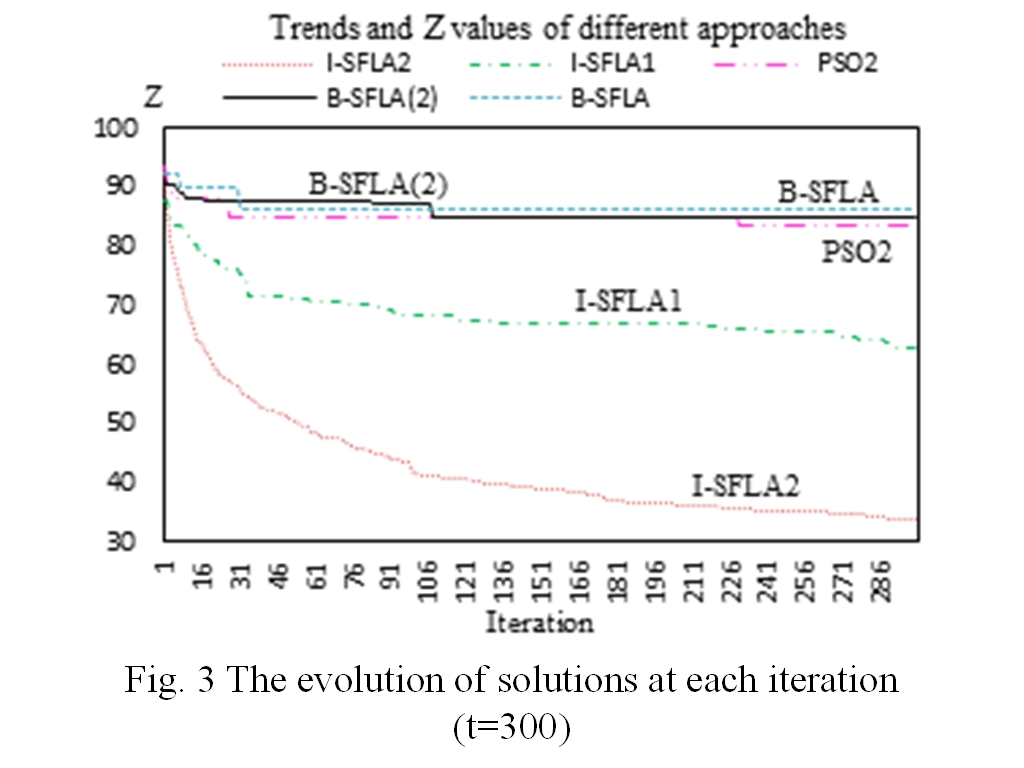| Technical Name | Using Improved Shuffled Frog-Leaping Algorithm for the Optimization of Component Sequencing and Feeder Assignments for a Chip Shooter Machine | ||
|---|---|---|---|
| Project Operator | National Kaohsiung University of Science and Technology | ||
| Project Host | 徐賢斌 | ||
| Summary | Mimicking the foraging behavior of frogs, SFLA aims to find the best position in a searching space, corresponding to the optimal solution in the solution space. While improving the simplicity of general heuristics, the SFLA can avoid the computationally intractability of mathematical models. The improved SFLA includes these novel features: (1) use Sobol Sequence to generate more uniformly-distributed random number (enabling more uniformly-distributed initial positions for frogs), (2) use the strategy of transitioning from exploration to exploitation (change wide exploration to exploit fewer elites), (3) allow all frogs to attend evolution (gain more population advantage), (4) use adaptive leap (avoid random search), (5) use adaptive variant (avoid sticking to a local optima), (6) use neighborhood jump (avoid a direct jump wasting one local search), (7) use compulsory jump (avoid a frog to idle). These novel features enable frogs to find the optimal/near-optimal solution. |
||
| Scientific Breakthrough | The I-SFLA2 has the novel features: (1) use quasi random numbers and ROV technique to generate feasible solution; (2) allow all frogs to attend evolution to gain more population advantage; (3) varying number and size of memeplexes; (4) use the strategy of transitioning from exploration to exploitation; (5) use self-adaptive leap; (6) use a two-stage mutation procedure to vary a frog. In average, the I-SFLA2 has a 165.3% edge over the SFLA (Kennedy and Eberhart, 1995); a 78.5% over the I-SFLA1 (Zhu and Zhang, 2014); a 171.2% over the PSO2 (Hsu, 2016). The breakthrough points include: (1) the successful development of I-SFLA2 and apply it to solve the CSP and FAP for a chip shooter machine, and (2) the proof of the superiority of the I-SFLA2 over PSO2, SFLA, and I-SFLA1 (see attachment). |
||
| Industrial Applicability | Taiwan has an advanced electronic industry that has contributed a lot to the GDP of this country. For electronic products, printed circuited board assembly (PCBA) is an important manufacturing process as PCBs are essential parts of electronic products. Due to the need to connect many components, the PCBA process tends to become the bottleneck in an assembly line. For improvement, many PCBA firms have introduced chip shooter machines to expedite this process. However, software for production planning is also necessary to best utilize these automatic machines. An improved shuffled frog-leaping algorithm (I-SFLA2) is proposed to improve the productivity of a chip shooter machine. Specifically, the I-SFLA2 focuses on dealing with the component sequencing problem and feeder assignment problem. |
||
| Keyword | printed circuit board printed circuit board assembly shuffled frog-leaping algorithm swarm intelligence component sequencing problem feeder assignment problem metaheuristic chip shooter machine productivity automation | ||
- hphsu@nkust.edu.tw
other people also saw







